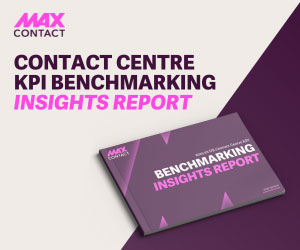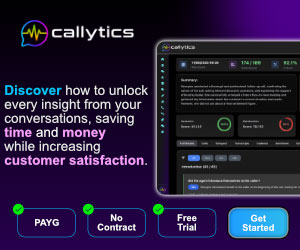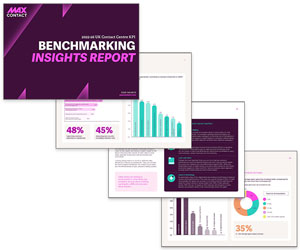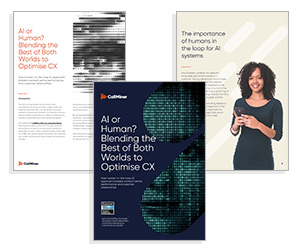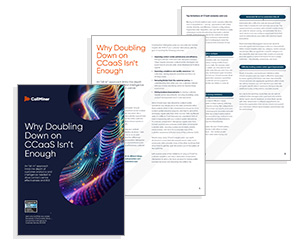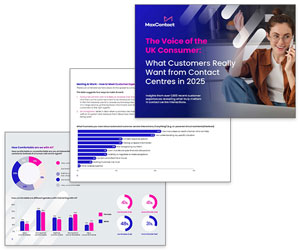Speech analytics helps contact centres understand customer interactions by analysing conversations in real time or after a call.
This technology is used across various industries to improve customer experience, ensure compliance, and enhance operational efficiency.
To find out more, we asked MJ Johnson, Senior Director, Product Marketing at CallMiner, David Samuel, Chief Product Officer at Contexta360, and Sean McIver, Product Owner at MaxContact, to outline the top uses of speech analytics.
Video: What Are the Top Uses of Speech Analytics?
Watch the video below to hear MJ, David and Sean explain the top uses for speech analytics in contact centres:
With thanks to the following people for contributing to this video:
- MJ Johnson, Senior Director, Product Marketing at CallMiner
- David Samuel, Chief Product Officer at Contexta360
- Sean McIver, Product Owner at MaxContact
Four Top Uses of Speech Analytics
1. Monitoring Customer Well-Being
One of the key uses of speech analytics is assessing customer sentiment and well-being.
By analysing tone, keywords, and context, contact centres can identify whether customers feel satisfied, frustrated, or in need of additional support.
“For some of the top uses of speech analytics, primarily you’ve got customer well-being.
There’s a focus, especially at the moment after what everyone’s just been through in these uncertain times, to use a standard phrasing.
There’s an element of wanting to make sure that customers are comfortable.
Whether that’s in a sales environment, whether that’s in a retention environment, almost regardless of the vocal interaction, there is a requirement to ensure that the customer is happy.
So there is a huge value placed on understanding what the customer has said, and also what they meant by what they said.” – Sean McIver
This is especially important in sales and retention environments, where understanding emotions can influence outcomes.
2. Improving Operational Efficiency
Traditionally, speech analytics has been used to drive efficiency in contact centres, as MJ explains:
“Traditionally, speech analytics or, as we’ve said, conversational intelligence, has been used to drive operational efficiencies and compliance use cases in the call centre.
Increasingly the same mechanisms which drove those efficiencies in the call centre can be used to improve customer experiences in all different use cases.”
It helps identify common issues, streamline processes, and reduce call handling times. By analysing large volumes of calls, contact centres can spot trends and make informed decisions to improve overall performance.
3. Enhancing Compliance and Protection
In many contact centres, only a small percentage of calls are manually reviewed. Speech analytics allows contact centres to monitor every interaction, ensuring compliance with regulations and identifying potential risks.
“Uses like agent performance and business protection are an age-old one. Only a small percentage of calls in an average contact centre ever get listened to by either a supervisor or a quality manager.
And unless something bad happens like a complaint or someone mis-selling something, a non-compliance or something like that, those calls just kind of sit on the shelf and they never get listened to.
To try and identify what went wrong usually happens after the fact and the damage has already been done.
Speech analytics today provides a more proactive and automated solution where you can pre-empt situations that can lead to the regulatory and compliance-type breaches.” – David Samuel
This proactive approach helps prevent issues before they escalate, protecting both customers and businesses.
4. Supporting Agent Performance
Speech analytics can also be used to assess agent interactions and provide targeted coaching.
By identifying strengths and areas for improvement, contact centres can enhance training programmes and ensure agents deliver better customer experiences.
The Evolving Role of Speech Analytics
While speech analytics has traditionally been used for compliance and efficiency, its role is expanding.
Contact centres are increasingly using it to gain deeper insights into customer needs and improve service quality.
By leveraging this technology, contact centres can create more personalised and effective customer interactions.
If you are looking for more great insights from the experts, check out these next:
- Understanding How IVR Works
- The Algorithms Behind Chatbots
- Understanding the Difference Between WFM and WFO
- A Quick Introduction to Interactive Voice Response (IVR)
Author: Robyn Coppell
Reviewed by: Hannah Swankie
Published On: 26th Jul 2022 - Last modified: 25th Sep 2025
Read more about - Video, CallMiner, Contexta360, David Samuel, MaxContact, MJ Johnson, Sean McIver, Speech Analytics, Videos




